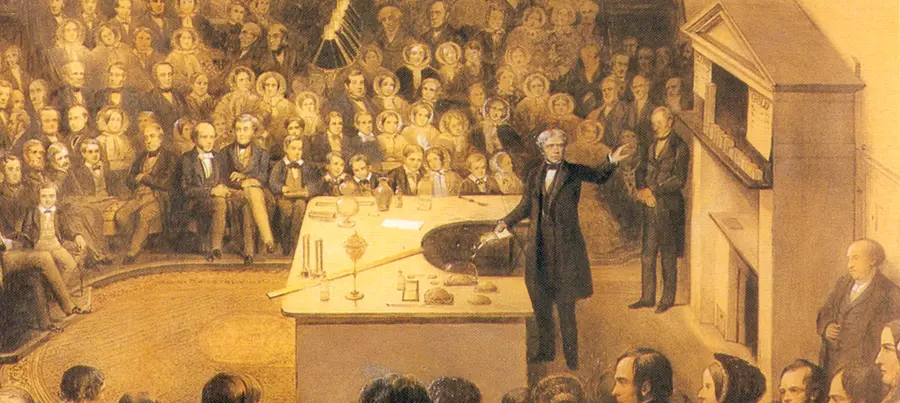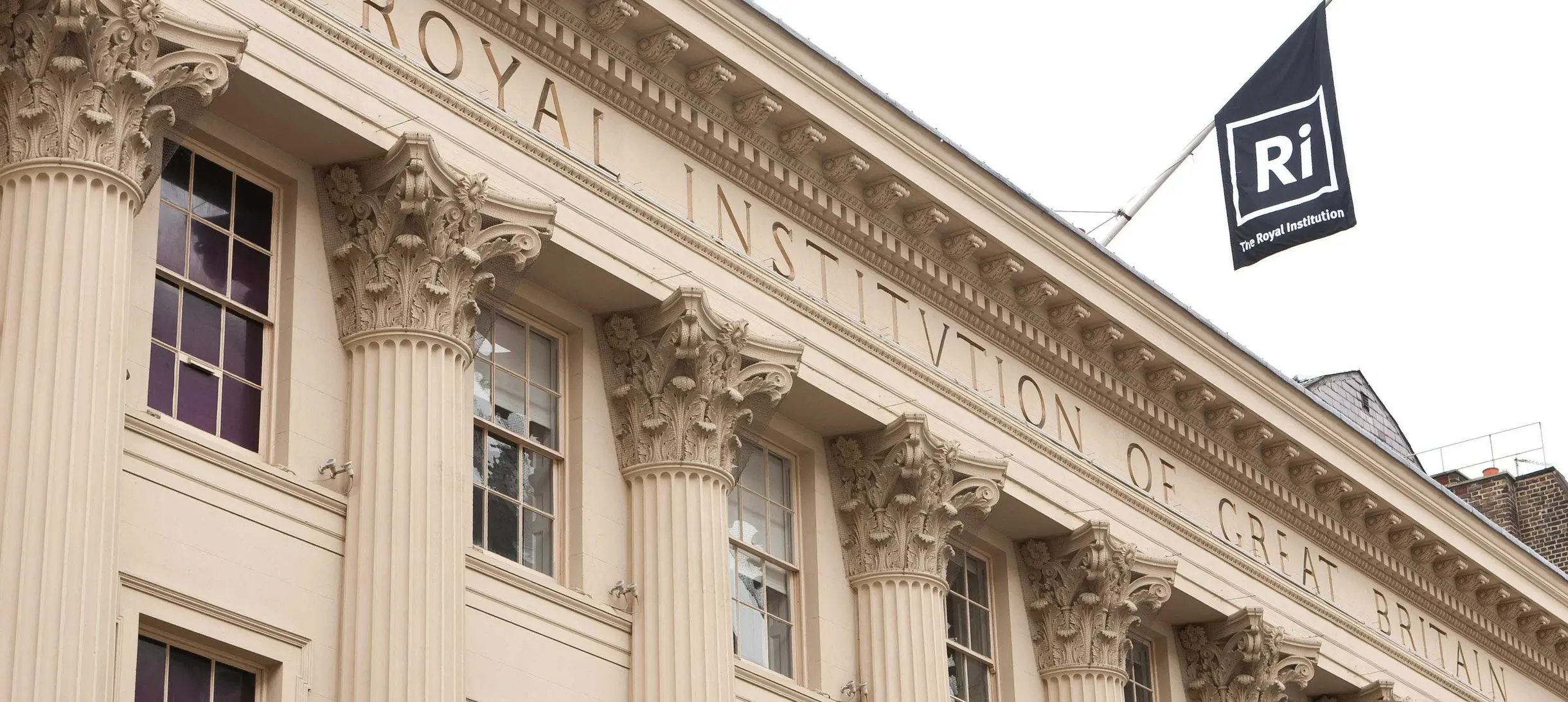Timeline of the CHRISTMAS LECTURES
The first evidence of the CHRISTMAS LECTURES exists in the form of an advertisement in The Times, seen below, published in 1825. This introduced the first ever CHRISTMAS LECTURES series hosted by John Millington on Natural Philosophy. This was 25 years after the first ever Ri lecture in 1800. The Ri have hosted the lectures every year since, stopping only for World War II.

Michael Faraday's CHRISTMAS LECTURES
The second series of CHRISTMAS LECTURES were presented by Michael Faraday, who went on to present a total of 19 - the most by one individual ever!

Michael Faraday presented his first Christmas lecture in 1827, on the topic of Chemistry.
His other lectures included:
- 1829, 1835 and 1843 on Electricity
- 1832, 1837, 1841 and 1845 on Chemistry
- 1848 on The Chemical history of a Candle
This lecture series was printed as a book in 1861, and is still in print today.
24 years later, in 1851, Faraday began his decade-long run of Christmas lectures:
- 1851 on Attractive forces
- 1852 on Chemistry
- 1853 on Voltaic electricity
- 1854 on The chemistry of combustion
- 1855 on The distinctive properties of common metals
- 1856 on Attractive forces
- 1857 on Static electricity
- 1858 on The metallic properties
- 1859 on The various forces of matter and their relations to each other
- 1860 on The chemical history of a candle
Faraday had actually given his final lecture series twice before, in 1848 and 1854. He had intended on the 1859 series being his last, but the sudden resignation of Ri Secretary John Barlow in 1860 meant Faraday was asked last minute to deliver another CHRISTMAS LECTURES series.
CHRISTMAS LECTURES on TV
It is a common misconception that the CHRISTMAS LECTURES were first broadcast in 1966, as they were shown television just 7 weeks after the BBC was formed.
In 1936, the first ever scientific experiments were broadcast on television using content from the upcoming CHRISTMAS LECTURES series presented by Geoffrey Ingram Taylor.
From 1939 to 1946, the CHRISTMAS LECTURES were suspended due to WWII.
After the return of the CHRISTMAS LECTURES after WWII, the BBC approached the Ri in 1948 about televising the series.
In January 1949, a special television broadcast of the 1948 lecture series by Frederic Bartlett was released.
In December 1949, the BBC returned to film Percy Dunsheath's CHRISTMAS LECTURES
In 1952 Edward Andrade, who gave the 1950 CHRISTMAS LECTURES, was forced to resign from his position as Fullerian Professor of Chemistry at the Ri. The legal battle that followed temporarily halted the collaboration between the BBC and the Ri, including the broadcasting of the CHRISTMAS LECTURES.
In 1953, William Lawrence Bragg was appointed as Resident Professor at the Ri, and he fought hard to restore the reputation of the Ri and their relationship with the BBC.
In 1966, the newly formed BBC 2 run by David Attenborough commissioned the complete 7-part CHRISTMAS LECTURES series to be televised.
This was the start of the CHRISTMAS LECTURES being regularly televised. The series was presented by Eric Laithwaite and entitled The Engineer in Wonderland.
It wasn't until 1994 that a woman presented the CHRISTMAS LECTURES, with Baroness Susan Greenfield being the first with Journey to the Centres of the Brain
The CHRISTMAS LECTURES have been broadcast on a range of channels, including Channel Four and Channel Five, but have remained on BBC Four since 2010.
Going global
In 1990, the CHRISTMAS LECTURES travelled to Japan for the first time with Charles A Taylor's 1989 series Exploring music. Taylor repeated the series for live audiences, and it was also televised on Japanese National TV.
In August 2012, the Christmas Lectures travelled to Singapore, in partnership with the Singapore Science Centre. Bruce Hood presented his 2011 series Meet your brain, which were broadcast on MediaCorp TV.
The CHRISTMAS LECTURES® is a registered trademark. Contact xmaslecs@ri.ac.uk for more information.



